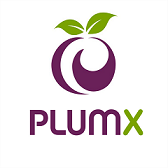Effect of Farmer Field School’s (FFS) Farmer Field Day on the Adoption of Vegetable Production Technologies in Homa-Bay Town Sub-County, Homa-Bay County, Kenya
Abstract
The Farmer Field School (FFS) is a participatory extension approach widely implemented in developing countries and recognised as an effective method for disseminating and adopting agricultural technologies. However, few studies have evaluated the specific contribution of the FFS Farmer Field Day (FFD) component to vegetable production technologies adoption in Homa Bay Town Sub-County, Kenya. This study assessed the effect of the FFS Farmer Field Day on farmers’ adoption of vegetable production technologies. An ex-post-facto research design was used to analyse the influence of FFS Farmer Field Day participation on technology adoption. Primary data were collected from 120 vegetable farmers belonging to 10 FFS groups, while 10 extension officers served as the key informants. Stratified random sampling was applied, and data were analysed using the Statistical Package for Social Sciences (SPSS) Version 25. Descriptive statistics (frequencies and percentages) were used to determine the relationship between FFS Farmer Field Day participation and the adoption of selected vegetable production technologies. The findings revealed that FFS Farmer Field Day participation significantly enhanced the adoption of nursery establishment (97.5%), transplanting (86.8%), compost manure (85.1%), mulching (75.2%), and farmyard manure application (70.2%). The study concludes that the FFS Farmer Field Day is a crucial platform for promoting technology adoption among smallholder vegetable farmers. It recommends that the Ministry of Agriculture and Livestock Development and development partners integrate regular FFS Farmer Field Days into agricultural extension programs to improve knowledge transfer and uptake of sustainable production technologies
Downloads
References
Aker, J. C. (2011). Dial "A" for agriculture: A review of information and communication technologies for agricultural extension in developing countries. Agricultural Economics, 42(6), 631–647.
Asian Vegetable Research and Development Center. (2013). Improving Seedling Production in Sub-Saharan Africa. Asian Vegetable Research and Development Center.
Bandiera, O., & Rasul, I. (2006). Social networks and technology adoption in Northern Mozambique. The Economic Journal.
Braun, A., et al. (2006). A global survey and review of farmer field school experiences. International Livestock Research Institute.
Braun, A. R., & Duveskog, D. (2011). The Farmer Field School Approach – History, Global Assessment and Success Stories. Rome: FAO.
Davis, K., Nkonya, E., Kato, E., et al. (2012). Impact of Farmer Field Schools on Agricultural Productivity and Poverty in East Africa. World Development, 40(2), 402–413.
Development in Gardening Kenya (2018). Progress report: Homa Bay, Kenya; County Government of Homa Bay
Duveskog, D. (2008). The Farmer Field School Approach - History, Global Assessment and Success Stories.
Duveskog, D. (2013). Farmer Field Schools as a transformative learning space in the rural African setting. Doctoral Thesis, Swedish University of Agricultural Sciences Uppsala 2013. [http://pub.epsilon.slu.se/ 10383/1/ duveskog _d_130503.pdf] site visited 20/10/2013.
FAO. (2016). Farmer Field School Guidance Document: Planning for quality programmes.
Food and Agriculture Organization. (2016). Vegetable Nursery Management Manual. Food and Agriculture Organization of the United Nations.
Food and Agriculture Organization. (2018). Evaluation of Participatory Extension Methods in Uganda. Rome: Food and Agriculture Organization.
Food and Agriculture Organization. (2020). Participatory Extension Approaches for Sustainable Agriculture. Rome: FAO.
Friis-Hansen, E., & Duveskog, D. (2012). The empowerment route to well-being: An analysis of Farmer Field Schools in East Africa. World Development.
Gikunda, R.M. (2023). Influence of Land Tenure and Farmer Income on Adoption of Indigenous Agricultural Practices in Chuka Sub County, Kenya.
Howell. J (1988). Training and Visit Extension in Practice, Agricultural Administration Unit Occasional Paper 8.
Makori D. Momanyi (2021). Land use Transformation and Changes in Peri-urban Livelihoods in Kisii Municipality, Kisii County, Kenya.
Ministry of Agriculture, Ministry of Livestock and Fisheries Development, (2004). Strategy for Revitalizing Agriculture. MoA and M.o.LD&F. Agricultural Information Centre, 2004.
Minjauw, B., Romney, D. Muriuki, H.G, 2003. Farmer Field Schools for Kenyan Dairy Farmers. Leisa Magazine 2003
Mudege, N. N., et al. (2015). Gender and Farmer Field Schools in East Africa: A Review of Literature. NJAS - Wageningen Journal of Life Sciences, 69, 17–23.
Muriithi, Beatirce (2015). Smallholder Horticultural Commercialization: Gender Roles and Implications for Household Well-being in Kenya
Oladele, O.I. (2001). Farmer perceptions of the relevance of Livestock productiontechnologies in Oyo State, Nigeria. Livestock Research for Rural Development 13, (6), 136
Onego Roseline & Jagero Nelson (2011). Factors Influencing Women’s Access and Control of Land in Kenya. African Journal of Social Sciences.
Otieno, D., Kamau, M., & Karanja, D. (2014). Impact of Farmer Field Days on Adoption of Improved Practices in Kenya. Journal of Agricultural Extension, 18(1), 50–59.
Pretty, J., Toulmin, C., & Williams, S. (2011). Sustainable intensification in African agriculture. International Journal of Agricultural Sustainability, 9
Rogers, E. M. (2003). Diffusion of Innovations (5th ed.). Free Press.
Ruth K. Mutegi (2020). Assessing the impact of FFDs on the adoption of Topshot Herbicide among rice farmers at the Mwea Irrigation Agricultural Development Centre.
Sang, N. C & Cheruiyot, J. K. (2020). Farmers’ Information Literacy and Productivity Performance of Smallholder Horticulture in a Highland Zone, Kenya.
Van den Berg, H. et al. (2020). Farmer Field Schools for climate change adaptation and sustainable agriculture. FAO.
Yamane, T. (1967). Statistics. An introductory Analysis. (2nd Edition), Harper and Row, New York. 919pp
Copyright (c) 2025 Charles Odoyo Nyayiera, Joash K. Kibett, PhD, Naomi Rioba, PhD

This work is licensed under a Creative Commons Attribution 4.0 International License.




























